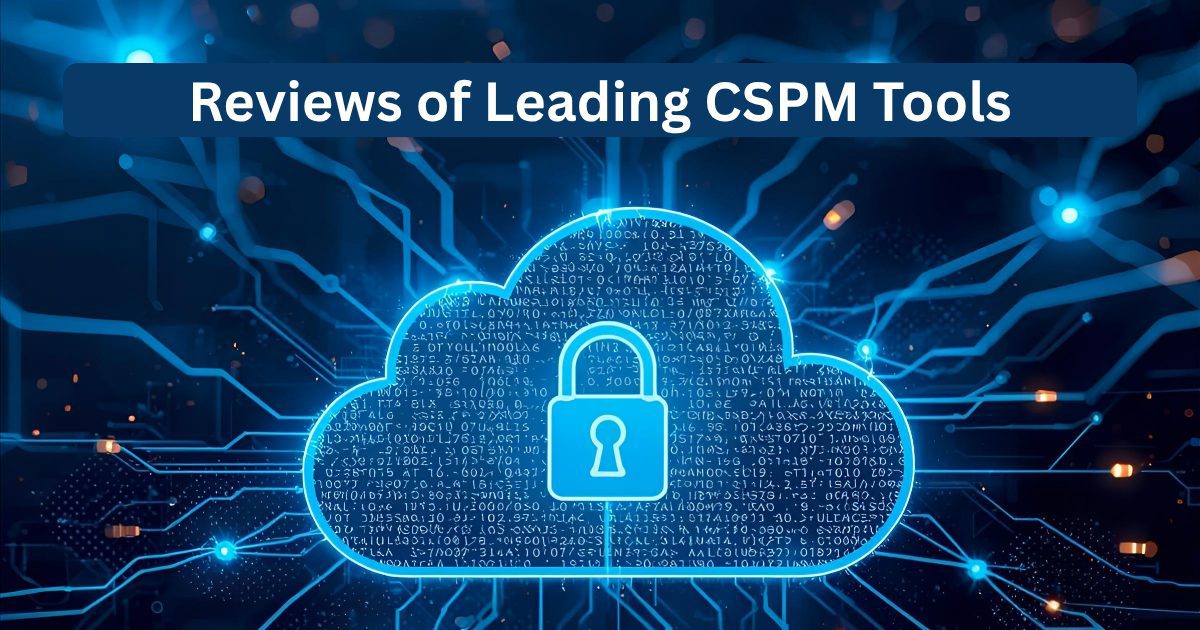In an era dominated by digital transformation, cloud environments have become the backbone of business operations. As organizations migrate workloads to the cloud, the need for advanced security oversight has never been greater. This is where cloud security posture management vendors play a vital role. At CYTAS, we focus on helping enterprises enhance their cloud visibility, automate compliance, and reduce risks through the right cloud security posture management vendors for 2025.
Choosing the right CSPM partner ensures that your organization can detect misconfigurations, enforce policies, and strengthen defenses against evolving cyber threats. In this comprehensive blog, we will explore the importance, key features, and leading cloud security posture management vendors for 2025 shaping the cybersecurity landscape.
Understanding Cloud Security Posture Management
Cloud Security Posture Management (CSPM) refers to a set of tools and practices that continuously monitor cloud environments for potential security risks and compliance violations. These platforms automatically identify vulnerabilities, misconfigurations, and policy breaches, ensuring that cloud infrastructure remains secure.
The main goal of cloud security posture management vendors for 2025 is to help organizations:
- Detect and correct misconfigurations in real time
- Maintain compliance with global frameworks like GDPR, HIPAA, and ISO
- Monitor workloads across multiple cloud platforms
- Provide unified visibility into security posture
- Automate threat detection and remediation
Why Businesses Need CSPM Solutions
Cloud environments are dynamic and complex, which makes manual monitoring nearly impossible. Modern enterprises operate across hybrid or multi-cloud setups involving AWS, Azure, and Google Cloud, leading to increased exposure points.
Partnering with reliable cloud security posture management vendors for 2025 enables organizations to:
- Reduce human error: Automation eliminates manual oversight and misconfigurations.
- Improve visibility: Gain real-time insights into security risks across all environments.
- Ensure compliance: CSPM tools continuously monitor adherence to standards.
- Detect threats early: AI-driven tools identify anomalies before they escalate.
- Streamline operations: Centralized dashboards simplify policy management.
CYTAS emphasizes the adoption of CSPM to ensure that organizations maintain continuous compliance and resilience in cloud ecosystems.
Core Features of Cloud Security Posture Management
To choose the right cloud security posture management vendors for 2025 , it’s essential to understand the core features these platforms offer.
- Continuous Monitoring: Detects vulnerabilities and misconfigurations automatically.
- Risk Assessment and Prioritization: Identifies high-risk threats and prioritizes remediation efforts.
- Compliance Automation: Ensures alignment with global security standards.
- Multi-cloud Support: Works seamlessly across AWS, Azure, and GCP.
- Remediation Workflows: Automatically resolves detected issues through pre-set policies.
- Identity and Access Management (IAM) Oversight: Monitors user access and permissions.
- Threat Intelligence Integration: Enhances detection accuracy through data analytics.
These features ensure that CSPM platforms maintain a robust cloud defense strategy and continuously improve security posture.
Top Cloud Security Posture Management Vendors for 2025
Let’s explore the leading cloud security posture management vendors for 2025 known for their innovation, scalability, and reliability.
1. Datadog CSPM
Datadog is a well-recognized name in the cybersecurity landscape, offering comprehensive CSPM capabilities. Its solution provides:
- Continuous cloud configuration monitoring
- Real-time compliance tracking
- Unified visibility across hybrid and multi-cloud setups
- Automated alerting and reporting tools
Datadog CSPM integrates seamlessly with existing DevOps tools, making it ideal for organizations focused on operational efficiency.
2. Palo Alto Prisma Cloud
Prisma Cloud, developed by Palo Alto Networks, offers an end-to-end CSPM solution that protects applications and workloads. Key advantages include:
- Continuous security posture assessment
- Advanced risk visualization dashboards
- Built-in compliance management
- AI-powered threat detection
Prisma Cloud is highly scalable and supports diverse cloud environments, making it suitable for large enterprises.
3. Check Point CloudGuard
CloudGuard focuses on proactive cloud protection with deep visibility into configurations. Its notable features include:
- Automated cloud compliance monitoring
- Threat prevention and detection
- Security auditing and policy enforcement
- Multi-cloud environment support
CloudGuard integrates seamlessly with AWS, Azure, and GCP for unified posture management.
4. Microsoft Defender for Cloud
Microsoft’s CSPM tool enhances cloud security posture through built-in analytics and automation. Its features include:
- Continuous assessment of cloud resources
- Integration with Azure Security Center
- Compliance with multiple regulatory frameworks
- Real-time alerting and remediation
It is especially beneficial for businesses using the Microsoft ecosystem for hybrid cloud management.
5. Orca Security
Orca Security provides agentless CSPM solutions with a focus on risk prioritization and contextual security. Core benefits include:
- Full-stack visibility without agents
- Comprehensive risk mapping
- Continuous compliance assessment
- Cloud-native workload protection
Orca’s innovative approach ensures organizations minimize blind spots in their security infrastructure.
6. Trend Micro Cloud One
Trend Micro’s Cloud One platform provides integrated CSPM and cloud workload protection. It offers:
- Unified compliance and monitoring
- Cross-cloud visibility
- Threat detection powered by AI
- Automated risk mitigation
This platform is well-suited for organizations emphasizing agility and automation.
7. Lacework
Lacework delivers automated CSPM with deep visibility into cloud configurations. Its unique features include:
- Machine learning-driven behavior analysis
- Automated compliance and governance
- Real-time alerting for suspicious activities
- Integration with major cloud providers
Lacework is particularly effective for DevSecOps teams aiming to embed security within cloud workflows.
Benefits of Partnering with Cloud Security Posture Management Vendors for 2025
Working with top cloud security posture management vendors for 2025 provides organizations with significant advantages that enhance long-term resilience.
- Proactive Risk Mitigation: Early detection reduces the likelihood of breaches.
- Operational Efficiency: Automation saves time and reduces manual oversight.
- Regulatory Compliance: Continuous monitoring ensures adherence to standards.
- Improved Decision-Making: Data insights support better resource allocation.
- Scalability: CSPM adapts as the organization’s cloud environment grows.
At CYTAS, we help businesses choose and implement the most suitable CSPM vendor, ensuring tailored solutions that match their operational needs.
How CYTAS Enhances Cloud Security Posture
CYTAS specializes in guiding organizations through the complexities of cloud security management. Our experts assess, design, and implement solutions that align with business goals while maintaining compliance and resilience.
We help enterprises:
- Identify vulnerabilities in existing cloud systems
- Select the best cloud security posture management vendors
- Integrate CSPM tools into existing security frameworks
- Conduct real-time monitoring and threat analytics
- Provide compliance reports and risk assessments
Our approach ensures that businesses not only secure their cloud assets but also enhance their digital trust and governance capabilities.
Key Considerations When Selecting a CSPM Vendor
Choosing among various cloud security posture management vendors for 2025 requires careful evaluation of several factors:
- Compatibility: Ensure the tool supports your cloud infrastructure.
- Ease of Integration: CSPM should work seamlessly with your DevOps tools.
- Scalability: It must accommodate future growth and expansion.
- Customization: Vendors should allow policy adjustments based on business needs.
- Support and Maintenance: Reliable customer support ensures continuity and issue resolution.
Future of Cloud Security Posture Management
The future of cloud security posture management vendors for 2025 lies in artificial intelligence, automation, and predictive analytics. As cloud adoption continues to grow, CSPM solutions will evolve to provide deeper visibility, adaptive learning, and proactive defense mechanisms.
Emerging trends include:
- AI-driven risk prediction and automated remediation
- Unified multi-cloud visibility
- Integration with Zero Trust architectures
- Advanced compliance intelligence
Organizations that adopt next-generation CSPM platforms early will stay ahead of emerging threats and maintain robust cloud governance.
Conclusion
Selecting the right cloud security posture management vendors is crucial for ensuring the integrity, compliance, and resilience of modern cloud environments. Vendors like Datadog, Prisma Cloud, CloudGuard, and Microsoft Defender have revolutionized how organizations protect their cloud assets.
By partnering with CYTAS, businesses can confidently evaluate, implement, and optimize CSPM solutions that align with their cybersecurity goals. The result is a secure, compliant, and future-ready cloud infrastructure capable of withstanding modern digital threats.
FAQs
1. What is cloud security posture management?
It is a security approach that continuously monitors and improves the security posture of cloud environments by detecting misconfigurations and risks.
2. Why are CSPM vendors important?
They provide tools and automation that help organizations maintain visibility, compliance, and protection across multiple cloud platforms.
3. Which are the leading CSPM vendors?
Top vendors include Datadog, Prisma Cloud, Check Point CloudGuard, Orca Security, and Microsoft Defender for Cloud.
4. How does CYTAS help in CSPM implementation?
CYTAS assists organizations in selecting, integrating, and managing CSPM solutions tailored to their business and compliance requirements.
5. What trends are shaping CSPM in the future?
AI automation, Zero Trust integration, and real-time risk intelligence are key trends defining the next generation of CSPM solutions.



